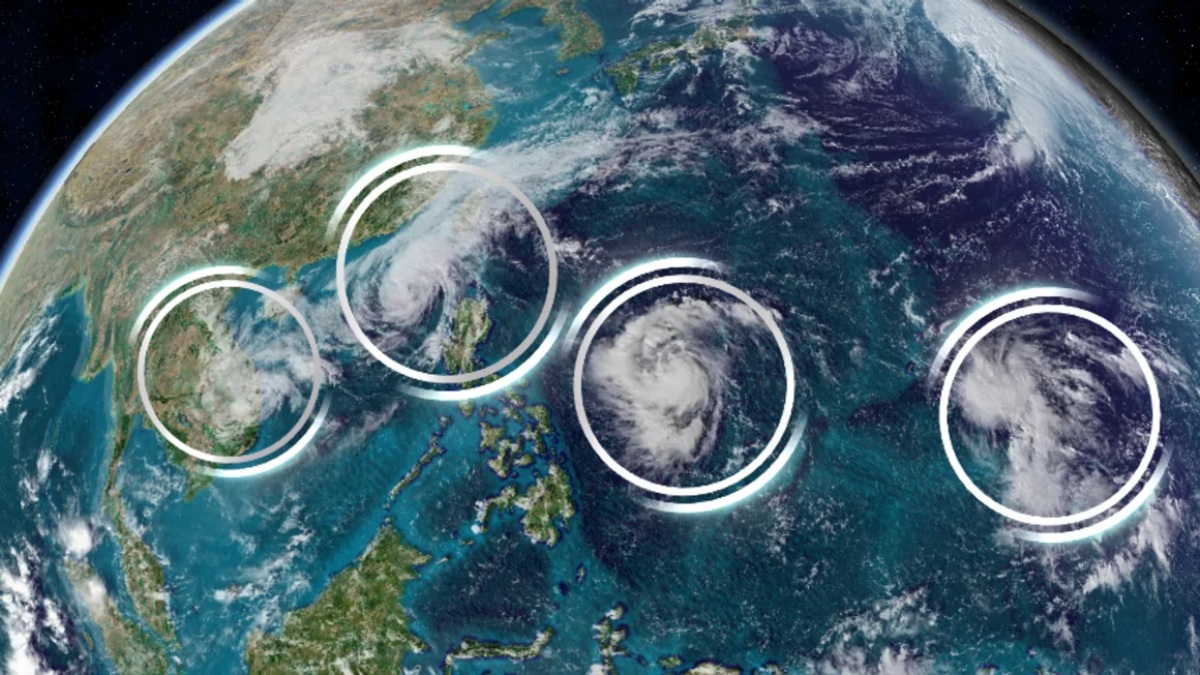The West Pacific is currently grappling with an unusual and alarming meteorological event, as four separate storm systems simultaneously churn across the region. This rare occurrence, attributed to rising ocean temperatures, poses an added threat to the already storm-battered Philippines.
According to Japan’s Meteorological Agency, this marks the first time since 1951 that four named storms have coexisted in November. The phenomenon has not been seen in any month for the past seven years. Satellite imagery from the Joint Typhoon Warning Center shows Typhoon Yinxing, Typhoon Toraji, Tropical Storm Usagi, and Tropical Storm Man-Yi stretching across the basin from Vietnam to Guam.
The Philippines, which frequently faces severe weather, is struggling with the rapid succession of storms, complicating relief efforts for thousands of evacuees. On Thursday, Typhoon Yinxing hit the northeastern region with winds akin to a Category 4 Atlantic hurricane, causing flooding, landslides, and storm surges. Although no fatalities were reported, the damage to homes, schools, and livelihoods has been significant. President Ferdinand Marcos Jr. visited affected areas, emphasizing the challenges of recovery and preparations for incoming storms.
Typhoon Toraji followed, making landfall on Luzon’s eastern coast with Category 1-equivalent winds and prompting further evacuations. Now a tropical storm, Toraji is moving across the South China Sea, bringing heavy rainfall to southeastern China.
Meanwhile, Tropical Storm Usagi, located 720 kilometers off the northeast coast of the Philippines, has strengthened into a typhoon and is expected to bring strong winds and storm surges within the next 48 hours. Further compounding concerns, Tropical Storm Man-Yi, southwest of Guam, is anticipated to strengthen to a typhoon by Friday and potentially impact the northeast Philippines by Sunday.
With six named storms already making landfall this year, including deadly Typhoon Gaemi in July and Typhoon Yagi in September, the relentless pace is taking a toll. The combined effects of previous storms have displaced nearly 300,000 people and caused significant loss of life and property. Relief workers and affected communities are experiencing exhaustion and “typhoon fatigue,” with health officials noting signs of burnout and stress.
The situation underscores the broader vulnerability of Southeast Asia to extreme weather fueled by warming oceans—a trend exacerbated by human-induced climate change. Scientists warn that rising sea temperatures could lead to more intense and frequent storms, even extending into traditionally calmer months, posing ongoing challenges for the region.






